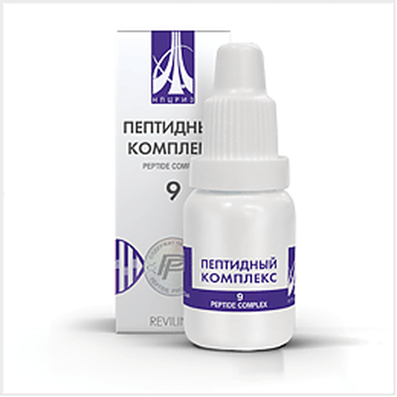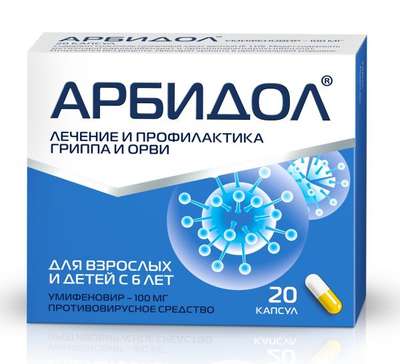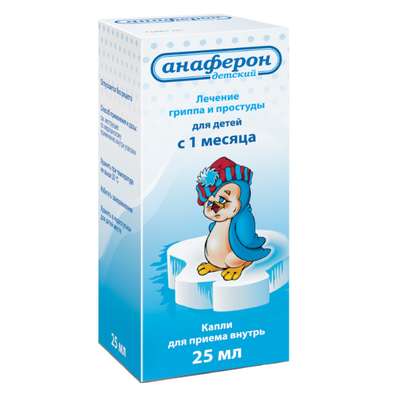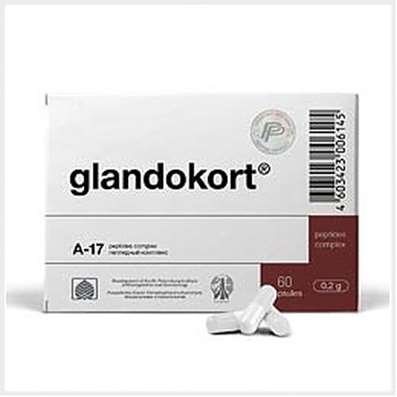Instruction for use: Dexalgin 25
I want this, give me price
Active substance Dexketoprofen
ATX code M01AE17 Dexketoprofen
Pharmacological group
Non-steroidal anti-inflammatory drugs (NSAIDs) [NSAIDs - Propionic acid derivatives]
Nosological classification (ICD-10)
C40.9 Malignant neoplasm of bones and articular cartilages of extremities of unspecified site
Tumors of bones and articular cartilage, Osteosarcoma, Osteogenic cancer, Reticulosarcoma of bone, Osteogenic sarcoma, Malignant neoplasm of bone, Chondrosarcoma mesenchymal
K08.8.0 * Painful toothache
Dentinal pain, Dentinal pains, Pain pulpitis, Anesthesia in dentistry, Pain syndromes in dental practice, Pain after removal of tartar, Pain when extracting a tooth, Toothache, Pain after dental interventions
M06.9 Other specified rheumatoid arthritis
Rheumatoid arthritis,Pain syndrome in rheumatic diseases, Pain in rheumatoid arthritis, Inflammation in rheumatoid arthritis, Degenerative forms of rheumatoid arthritis, Children's rheumatoid arthritis, Exacerbation of rheumatoid arthritis, Acute articular rheumatism, Rheumatic arthritis, Rheumatic polyarthritis, Rheumatoid arthritis, Rheumatic polyarthritis, Rheumatoid arthritis, Rheumatoid arthritis of active course, Rheumatoid arthritis, Rheumatoid polyarthritis, Acute rheumatoid arthritis, Acute rheumatism
M19.9 Arthrosis, unspecified
Change in brush with osteoarthritis, Osteoarthritis, Osteoarthrosis, Arthrosis of large joints, Pain syndrome in osteoarthritis, Pain syndrome in acute inflammatory diseases of the musculoskeletal system, Pain syndrome in chronic inflammatory diseases of the musculoskeletal system, Deforming arthrosis, Deforming osteoarthritis, Deforming osteoarthritis of joints, Osteoarthritis in the acute stage, Osteoarthritis of large joints, Acute pain syndrome with osteoarthritis, Post-traumatic osteoarthritis, Rheumatic osteoarthritis, Spondylarthrosis, Chronic osteoarthritis
M42 Osteochondrosis
Pain in spinal osteochondrosis, Cervical osteochondrosis, Radicular syndrome in osteochondrosis, intervertebral osteochondrosis, osteochondrosis, Osteochondrosis with radicular syndrome, Osteocondritis of the spine
M48.9 Spondylopathy, unspecified
Chronic diseases of the spine, Painful muscle spasms in diseases of the spine, Spondyloarthropathy, Seronegative spondyloarthropathy
M54.1 Radiculopathy
Acute sciatica, Radiculopathy, Radiculitis, Radiculitis with radicular syndrome, Acute radiculopathy, Pain syndrome with radiculitis, Subacute radiculitis, Radiculitis, Chronic radiculitis, Diseases of the spinal column
M54.3 Sciatica
Ishialgia, Neuralgia of the sciatic nerve, Sciatic neuritis
M54.9 Dorsalgia, unspecified
Pain syndrome with radiculitis, Pain syndrome in the back,Pain with radiculitis, Degenerative changes in the spine, Degenerative and dystrophic disease of the spine and joints, Degenerative disease of the spine, Osteoarthrosis of the spine, Painful lesions of the spine
M79.2 Neurology and neuritis, unspecified
Pain syndrome with neuralgia, Brachialgia, Occipital and intercostal neuralgia, Neuralgia, Neuralgic pain, Neuralgia, Neuralgia of intercostal nerves,Neuralgia of the posterior tibial nerve, Neuritis, Neuritis traumatic, Neuritis, Neurological Pain Syndromes, Neurological contractures with spasms, Acute neuritis, Peripheral neuritis,Post-traumatic neuralgia,Severe pain of a neurogenic nature, Chronic neuritis, Essential neuralgia
N23 Renal colic unspecified
Pain in renal colic, Pain smooth muscle spasm, Pain spasm of smooth muscles (renal and biliary colic, intestinal spasms, dysmenorrhea), Pain spasm of smooth muscles of internal organs, Pain spasm of smooth muscles of internal organs (kidney and biliary colic, intestinal spasms, dysmenorrhea), renal Colic, ureteral colic, Renal colic, Renal colic with urolithiasis, Kidney disease, Spasm of smooth muscle in diseases of the urinary system, The spasm of the urinary tract, The spasm of the ureter, The spasm of the ureters, Spasms of the urinary tract, Spasms of the urinary tract
N94.6 Dysmenorrhea Unspecified
Pain during menstruation, Functional disorders of the menstrual cycle, Menstrual cramps, Emmeniopathy, Pain during menstruation, Painful menstrual irregularities, algomenorrhea, algomenoreya, Pain smooth muscle spasm, Pain spasm of smooth muscles (renal and biliary colic, intestinal spasms, dysmenorrhea), Pain spasm of smooth muscles of internal organs (kidney and biliary colic, intestinal spasms, dysmenorrhea), Disalgomenoreya, dysmenorrhea, Dysmenorrhea (essential) (Exfoliative), menstrual disorder, menstruation painful, metrorrhagia, Violation of the menstrual cycle, Menstrual irregularities, Prolaktinzavisimoe menstrual disorders, Prolaktinzavisimoe menstrual dysfunction, Pain spasm of smooth muscles of internal organs, Spasmodic dysmenorrhea, Primary disalgomenoreya
R52.1 Constant unrestrained pain
Pain syndrome in oncology practice, Pain syndrome pronounced, Pain syndrome in malignant neoplasms, Pain syndrome in cancer, Pain syndrome with tumors, Pain syndrome in cancer patients, Pain in malignant neoplasms, Pain in malignant tumors, Pain in tumors, Pain in cancer patients, Pain in bone metastases, Pain in cancer, Malignant pain syndrome, Intensive chronic pain, Intensive pain syndrome, Intensive non-curable pain syndrome, Intensive chronic pain syndrome, Unrestrained pain, Unrestrained pain, Tumor pain, Post-traumatic pain syndrome, Severe pain, Chronic pain, Chronic Pain Syndrome
R52.2 Other constant pain
Pain syndrome, rheumatic origin, Pain at vertebral lesions, Pain in the chamber, Pain for burns, Pain syndrome weak or moderate, Perioperative pain,Moderate to severe pain, Moderately or weakly expressed pain syndrome, Moderate to severe pain, Ear pain of otitis, Neuropathic pain, neuropathic pain
R52.9 Unspecified Pain
Pain after cholecystectomy, Pain shooting, Non-malignant pain, Obstetric and gynecological pain, Pain syndrome, Pain in the postoperative period, Pain in the postoperative period after orthopedic surgery, Pain of inflammatory genesis, Pain than cancer genesis, Pain syndrome after diagnostic procedures, Pain after surgery Diagnostic, Pain after surgery, Pain after orthopedic surgery, Pain after injuries, Pain after the removal of hemorrhoids, Pain at the non-rheumatic inflammation of nature, Pain in inflammatory lesions of the peripheral nervous system, Pain in diabetic neuropathy, Pain in acute inflammatory diseases of the musculoskeletal system, Pain when the tendon pathology, Pain smooth muscle spasm, Pain spasm of smooth muscles (renal and biliary colic, intestinal spasms, dysmenorrhea), Pain spasm of smooth muscles of internal organs, Pain spasm of smooth muscles of internal organs (kidney and biliary colic, intestinal spasms, dysmenorrhea), Pain in trauma syndrome, Pain with injuries and after surgical interventions, Pain in chronic inflammatory diseases of the musculoskeletal system, Pain with duodenal ulcer, Pain syndrome in gastric ulcer, Pain syndrome in gastric ulcer and duodenal ulcer, pain, Pain during menstruation, pain syndromes, painful condition, Painful foot fatigue, Sore gums when wearing dentures, Soreness of the cranial nerves exit points, Painful menstrual irregularities, Painful dressings, Painful muscle spasm, Painful teeth growth, Melosalgia, Pain in the area of the surgical wound, Pain in the postoperative period, Pain in the body, Pain after diagnostic procedures, Pain after orthopedic surgery, Pain after surgery, The pains of the flu, Pain in diabetic polyneuropathy, Pain for burns, Pain during sexual intercourse, Pain during diagnostic procedures, Pain during therapeutic procedures, for colds Pain, Pain in sinusitis, Pain in trauma, Pain traumatic, The pain in the postoperative period, Pain after diagnostic procedures, The pain after sclerotherapy, Pain after surgery, postoperative Pain, Pain postoperative and posttraumatic, posttraumatic pain, Pain when swallowing, Pain in infectious and inflammatory diseases of the upper respiratory tract, The pain of burns, The pain in traumatic muscle injury, Pain in trauma, The pain of tooth extraction, The pain of traumatic origin, Pain caused by spasm of smooth muscles, Expressed pain syndrome, Expressed pain syndrome, traumatic origin, Postoperative pain, Post-traumatic pain, Post-traumatic pain syndrome, Torpid pain, Traumatic pain, Traumatic pain, Mild pain, Moderately severe pain, Moderate pain, Polyarthralgia with polymyositis
T14.9 Injury unspecified
Pain syndrome after trauma, Pain syndrome with injuries, Pain syndrome with trauma and after surgery, Pain in case of injury, Pain of a traumatic nature, Joint pain with injuries, Postoperative and post-traumatic pain, Pain in case of injury, Pain of a traumatic origin, Severe pain syndrome of traumatic origin, Deep tissue damage, Deep scratches on the trunk, Closed injury, Minor Household Injuries, Minor skin damage, Violations of the integrity of soft tissues, Uncomplicated trauma, Extensive traumatic injury, Acute pain syndrome of traumatic origin, Edema with trauma, Postponed sports injuries, Post-traumatic pain, Soft tissue injuries, Joint wounds, Sports injuries, Injury, Traumatic pain, Traumatic pains, Traumatic infiltrate,Injuries to sports
T88.9 Complication of surgical and medical care, unspecified
Pain in the postoperative period, Pain in the postoperative period after orthopedic surgery, Pain syndrome after diagnostic procedures, Pain after surgery Diagnostic, Pain after surgery, Pain after orthopedic surgery, Pain after the removal of hemorrhoids, Pain in the application of excimer laser, Pain with injuries and after surgical interventions, Pain syndromes in the dental practice, Painful diagnostic intervention, Painful diagnostic manipulations, Painful instrumental diagnostic procedures, Painful instrumental manipulation, Painful treatments, Painful manipulations, Painful dressings, Painful therapeutic interventions, Pain in the area of the surgical wound, Pain in the postoperative period, Pain after diagnostic procedures, Pain after orthopedic surgery, Pain during diagnostic procedures, Pain during therapeutic procedures, Pain in orthopedics, The pain in the postoperative period, Pain after diagnostic procedures, The pain after sclerotherapy, The pain after dental surgery, postoperative Pain, Pain postoperative and posttraumatic, The pain of tooth extraction, Inflammation after surgery or injury, Inflammation after orthopedic surgery, Inflammation after surgery, The inflammatory syndrome after surgery, Festering postoperative fistula, Operating wound, Complications after tooth extraction
Composition
Tablets covered with a film membrane 1 tab.
active substance:
dexketoprofen trometamol 36.9 mg
(corresponding to 25 mg of dexketoprofen)
auxiliary substances: MCC - 141.2 mg; corn starch - 49.6 mg; sodium carboxymethyl starch (type A) - 27.1 mg; glyceryl palmitostearate 5.2 mg
membrane film: hypromellose - 1.34 mg; titanium dioxide (E171) 0.36 mg; macrogol 6000 - 0.6 mg; propylene glycol 0.42 mg
Description of dosage form
Transparent colorless solution with a characteristic smell of alcohol.
pharmachologic effect
Pharmacological action - anti-inflammatory, antipyretic, analgesic.
Pharmacodynamics
Dexketoprofen trometamol is the active substance of the drug DexalginŽ - NSAID, which has an analgesic, anti-inflammatory and antipyretic effect. The mechanism of action is associated with inhibition of PG synthesis at the level of COX-1 and COX-2.
The analgesic effect occurs 30 minutes after parenteral administration. The duration of the analgesic effect after administration in a dose of 50 mg is 4-8 hours.
With combined therapy with opioid analgesics of dexketoprofen, trometamol significantly (up to 30-45%) reduces the need for opioids.
Pharmacokinetics
Suction. Cmax after the / m administration of dexketoprofen trometamol is achieved on average after 20 min (10-45 min). AUC after a single injection in a dose of 25-50 mg is proportional to the dose, both with / m and with iv introduction. The corresponding pharmacokinetic parameters are similar after a single and repeated IM or IV injection, which indicates the absence of cumulation of the drug.
Distribution. For dexketoprofen, trometamol is characterized by a high level of binding to plasma proteins (99%). The average value of Vd is less than 0.25 l / kg, half-distribution time is about 0.35 h.
Excretion. The main way to excrete dexketoprofen is its conjugation with glucuronic acid, followed by the release through the kidneys. T1 / 2 dexketoprofen trometamol is about 1-2.7 hours. In the elderly, T1 / 2 is elongated (both after a single dose and after repeated iv or IV), an average of 48%, and a decrease of the total clearance of the drug.
Indications
relief of pain syndrome of various genesis (including postoperative, post-traumatic pain, pain with metastases in the bone, renal colic, algodismenorea, sciatica, radiculitis, neuralgia, toothache);
symptomatic treatment of acute and chronic inflammatory, inflammatory-degenerative and metabolic diseases of the musculoskeletal system (including rheumatoid arthritis, spondylitis, arthrosis, osteochondrosis).
Contraindications
hypersensitivity to dexketoprofen or other NSAIDs, or any of the excipients that make up the drug;
peptic ulcer of the stomach and duodenum;
gastrointestinal hemorrhages in anamnesis, other active bleeding (including suspicion of intracranial bleeding), anticoagulant therapy;
gastrointestinal diseases (Crohn's disease, ulcerative colitis);
severe violations of the liver (10-15 points on the scale Child-Pugh);
severe renal dysfunction (Cl creatinine <50 mL / min);
bronchial asthma (including in the anamnesis);
severe heart failure;
treatment of pain syndrome in aortocoronary shunting;
hemorrhagic diathesis or other coagulation disorders;
childhood.
DexalginŽ is contraindicated for non-varicose (epidural or intrathecal, intrathecal) administration due to ethanol included in the formulation.
With caution: allergic conditions in the anamnesis; disturbance of the hematopoiesis system; systemic lupus erythematosus or mixed connective tissue diseases; simultaneous therapy with other medications (see "Interaction"); predisposition to hypovolemia; cardiac ischemia; Older age (over 65 years).
pregnancy and lactation
The use of the drug DexalginŽ 25 during pregnancy and during lactation is contraindicated.
Side effects
Possible side effects with the use of dexketoprofen trometamol, as well as with the use of other drugs dexketoprofen, are given below on the descending frequency of occurrence: often (1-10% of patients); infrequently (0.1-1% of patients); rarely (0.01-0.1% of patients); very rarely (less than 0.01% of patients), including individual reports.
From the blood and lymphatic systems: rarely - anemia; very rarely - neutropenia, thrombocytopenia.
From the side of the central nervous system: infrequently - headache, dizziness, insomnia, drowsiness; rarely - paresthesia.
From the senses: infrequently - blurred vision; rarely - noise in the ears.
From the CCC: infrequently - arterial hypotension, a feeling of heat, hyperemia of the skin; rarely - extrasystole, tachycardia, arterial hypertension, peripheral edema, superficial thrombophlebitis.
From the respiratory system: rarely - bradypnoe; very rarely - bronchospasm, dyspnoea.
From the digestive tract (gastrointestinal tract): often - nausea, vomiting; infrequently - abdominal pain, dyspepsia, diarrhea, constipation, hematemesis, dry mouth; rarely - erosive and ulcerative lesions of the digestive tract, including bleeding and perforation, anorexia; very rarely - the defeat of the pancreas.
From the liver and gallbladder: rarely - increased activity of liver enzymes, jaundice; very rarely - liver damage.
From the urinary system: rarely - polyuria, renal colic; very rarely - nephritis or nephrotic syndrome.
On the part of the reproductive system: rarely - a menstrual cycle (in women), a violation of the function of the prostate (in men).
From the side of the musculoskeletal system: rarely - muscle spasm, difficulty in movement in the joints.
On the part of the skin: infrequently - dermatitis, rash, sweating; rarely - hives, acne; very rarely - severe skin reactions (Stevens-Johnson syndrome, Lyell's syndrome), angioedema, allergic dermatitis, photosensitivity.
From the side of metabolism: rarely - hyperglycemia, hypoglycemia, hypertriglyceridemia.
On the part of laboratory indicators: rarely - ketonuria, proteinuria.
Local and general reactions: often - pain at the injection site; infrequently - inflammatory reaction, hematoma, hemorrhages at the injection site, a feeling of heat, chills, fatigue; rarely - back pain, fainting, fever; very rarely - anaphylactic shock, swelling of the face.
Other disorders: aseptic meningitis that occurs predominantly in patients with systemic lupus erythematosus or mixed connective tissue diseases, hematologic disorders (purpura, aplastic and hemolytic anemia); rarely - agranulocytosis and bone marrow hypoplasia.
Interaction
DexalginŽ should not be mixed in a single syringe with a solution of dopamine, promethazine, pentazocine, pethidine or hydroxysin (a precipitate is formed).
DexalginŽ can be mixed in a single syringe with a solution of heparin, lidocaine, morphine and theophylline.
DexalginŽ, a diluted solution for infusion, should not be mixed with promethazine or pentazocine.
DexalginŽ, a diluted solution for infusions, is compatible with the following solutions for injection: dopamine, heparin, hydroxyzine, lidocaine, morphine, pethidine and theophylline.
When diluted solutions are stored for the use of DexalginŽ in plastic containers or when infusion systems made of ethyl vinyl acetate, cellulose propionate, LDPE or PVC are used, no absorption of the active substance with the listed materials occurs.
The following interactions are typical for all NSAIDs.
Unwanted combinations
With other NSAIDs, including salicylates in high doses (more than 3 g / day): simultaneous administration of several NSAIDs due to a synergistic effect increases the risk of gastrointestinal bleeding and ulcers.
With oral anticoagulants, heparin, in doses exceeding preventive, and ticlopidine: increased risk of bleeding due to inhibition of platelet aggregation and lesion of the mucosa of the gastrointestinal tract.
With lithium preparations: NSAIDs increase the level of lithium in the blood, down to toxic, and therefore this indicator should be monitored with the appointment, changing the dose and after the withdrawal of NSAIDs.
With methotrexate in high doses (15 mg / week and more): increased hematological toxicity of methotrexate due to a decrease in its renal clearance against the background of therapy with NSAIDs.
With hydantoins and sulfanilamide preparations: the risk of increasing the toxic effect of these drugs.
Combinations that require caution
With diuretics, ACE inhibitors: NSAID therapy is associated with a risk of developing acute renal failure in dehydrated patients (reduced glomerular filtration due to reduced GH synthesis). NSAIDs may reduce the hypotensive effect of certain drugs. With simultaneous appointment with diuretics, it is necessary to make sure that the patient's water balance is adequate, and to monitor the kidney function before prescribing NSAIDs.
With methotrexate in low doses (less than 15 mg / week): increased hematological toxicity of methotrexate due to a decrease in its renal clearance against the background of therapy with NSAIDs. It is necessary to conduct a weekly count of blood cells in the first weeks of simultaneous therapy. In the presence of a violation of kidney function, even in an easy degree, as well as in the elderly, careful medical supervision is necessary.
With pentoxifylline: increased risk of bleeding. It requires intensive clinical monitoring and frequent checking of bleeding time (blood clotting time).
With zidovudine: the risk of increasing the toxic effect on erythrocytes due to exposure to reticulocytes, with the development of severe anemia a week after the appointment of NSAIDs. It is necessary to count all blood cells and reticulocytes 1-2 weeks after the initiation of therapy with NSAIDs.
With sulphanilamide preparations: NSAIDs can enhance the hypoglycemic effect of sulfonylurea due to its displacement from the binding sites to plasma proteins.
With preparations of low-molecular heparin: increased risk of bleeding.
Combinations that need to be taken into account
With β-adrenoblockers: NSAIDs can reduce the hypotensive effect of β-adrenoblockers, which is due to inhibition of GH synthesis.
With cyclosporine and tacrolimus: NSAIDs may increase nephrotoxicity, which is mediated by renal GHG. During the simultaneous therapy, it is necessary to monitor the kidney function.
With thrombolytics: an increased risk of bleeding.
With probenecid: plasma concentrations of NSAIDs may increase, which may be due to an inhibitory effect on renal tubular secretion and / or conjugation with glucuronic acid, which requires correction of the NSAID dose.
With cardiac glycosides: NSAIDs can lead to an increase in the concentration of glycosides in the plasma.
With mifepristone: in connection with the theoretical risk of changing the effectiveness of mifepristone under the influence of inhibitors of the synthesis of PG, NSAIDs should not be prescribed earlier than 8-12 days after the abolition of mifepristone.
With ciprofloxacin: the data obtained in experimental studies on animals indicate a high risk of convulsions in the appointment of NSAIDs with ciprofloxacin in high doses.
Dosing and Administration
Inside, with food.
Depending on the intensity of the pain syndrome, the recommended adult dose is 12.5 mg (1/2 table) every 4 to 6 hours or 25 mg (1 table) every 8 hours. The maximum daily dose is 75 mg.
In elderly patients and patients with impaired liver and / or kidney function, treatment with DexalginŽ 25 should be started with lower doses. The maximum daily dose is 50 mg.
DexalginŽ 25 is not provided for long-term therapy, the course of treatment with the drug should not exceed 3-5 days.
Overdose
Symptoms: nausea, anorexia, abdominal pain, headache, dizziness, disorientation, insomnia.
Treatment: symptomatic therapy; if necessary, gastric lavage, dialysis.
special instructions
Patients with gastrointestinal disorders or gastrointestinal diseases in the history need constant monitoring. In the event of gastrointestinal bleeding or ulcers, DexalginŽ therapy should be discontinued.
Since all NSAIDs can inhibit platelet aggregation and increase bleeding time due to a slowdown in the synthesis of PG, controlled concomitant clinical studies have evaluated the simultaneous administration of dexketoprofen trometamol and low-molecular-weight heparin preparations in prophylactic doses in the postoperative period. No effect on coagulation parameters was observed. Nevertheless, with the simultaneous administration of DexalginŽ with other drugs that affect blood clotting, careful medical testing is necessary.
Like other NSAIDs, DexalginŽ can lead to increased levels of creatinine and nitrogen in the blood plasma. Like other inhibitors of PG synthesis, DexalginŽ may have a side effect on the urinary system, which can lead to the development of glomerulonephritis, interstitial nephritis, papillary necrosis, nephrotic syndrome, and acute renal failure.
As with the use of other NSAIDs, against the background of therapy with the drug DexalginŽ, there may be a slight transient increase in some hepatic parameters, as well as a significant increase in the level of AST and ALT in the blood serum. At the same time, control of hepatic and renal functions is necessary in the elderly. In the case of a significant increase in the corresponding indicators, DexalginŽ should be discarded.
Like other NSAIDs, dexketoprofen trometamol can mask the symptoms of infectious diseases. In case of detection of signs of bacterial infection or deterioration of well-being on the background of therapy with DexalginŽ the patient should immediately consult a doctor.
Each ampoule of DexalginŽ contains 200 mg of ethanol.
Impact on the ability to drive vehicles and manage mechanisms. In connection with the possible dizziness and drowsiness during the period of taking DexalginŽ, the ability to concentrate and the speed of psychomotor reactions in patients may be reduced.
Form of issue
Film-coated tablets, 25 mg. For 10 tab. in a planar cell packaging (white opaque PVC film / aluminum foil). 1 blister in a cardboard box.
Conditions of leave from pharmacies
On prescription.
storage Conditions
In the dark place at a temperature of no higher than 25 ° C.
Keep out of the reach of children.
Shelf-life
2 years.
Do not use after the expiry date printed on the package.

 Cart
Cart





